galaxies

The Milky Way Galaxy Resides in the Biggest Void in the Universe
| Arthur Dominic Villasanta | | Jun 07, 2017 07:20 PM EDT |
This void is estimated to have a diameter of 1 billion light years.
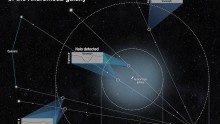
Galaxies 'Waste' Heavy Elements That can Potentially Form Planets
| Ana Verayo | | Jun 07, 2016 07:22 AM EDT |
New data reveals how galaxies are "wasting" heavy elements such as oxygen, carbon and iron by ejecting them into deep space to form halos.
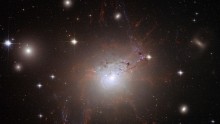
Scientists Say 'Red Geysers' Make Dormant Galaxies
| K. Salugsugan | | May 27, 2016 10:16 AM EDT |
Galaxies have turned into deserts without young stars billions of years ago due to galactic warming. The phenomenon has puzzled astronomers to identify the process that makes the gas in these galaxies too energetic and hot to make stars.
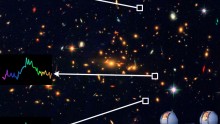
This is the Faintest and Most Distant Galaxy Ever Detected
| Ana Verayo | | May 23, 2016 06:55 AM EDT |
Astronomers have detected the faintest galaxy ever at 13 billion light years away from Earth.
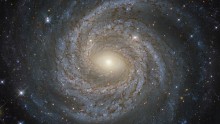
Hubble Captures Perfect Snowflake Galaxy
| Ana Verayo | | May 16, 2016 07:00 AM EDT |
Hubble Space Telescope just spotted a very bright spiral galaxy, resembling a snowflake and emitting powerful X-ray beams.
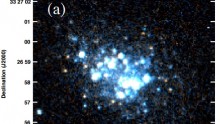
Mysterious Faint Galaxy With Lowest Metals Ever Provide Clues About Big Bang
| Ana Verayo | | May 13, 2016 04:52 AM EDT |
Astronomers detected a faint, small galaxy, possessing the least number of heavy elements ever, providing clues about the birth of the universe.

Monster Galaxies Found Wrapped Within Dark Matter Web
| Ana Verayo | | Dec 05, 2015 06:30 AM EST |
Astronomers detected a cluster of massive baby galaxies, wrapped within a web of dark matter, providing clues about the evolution of early galaxies.

Astronomers Discover Galaxies Die From the Center when it Stops Creating Stars
| Dino Lirios | | Apr 21, 2015 08:47 AM EDT |
New research suggests when a galaxy stops forming stars at its heart, it begins its procession toward its death.
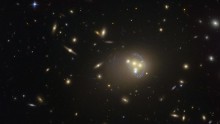
Scientists Suggest Dark Matter Not Completely 'Dark' After All
| Ana Verayo | | Apr 15, 2015 03:34 AM EDT |
With this new method, scientists have mapped out dark matter inside four colliding galaxies.
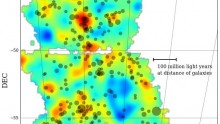
New Maps Show the Cosmic Scale of Dark Matter
| Marco Foronda | | Apr 14, 2015 03:41 AM EDT |
The maps show clumps and voids of dark matter in a patch of sky covering around two million galaxies and features hundreds of millions of light years across.
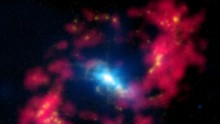
'Eye of Sauron' Helps in Accurately Measuring Galactic Distances
| Ana Verayo | | Nov 27, 2014 07:36 AM EST |
NGC4151 is also pivotal in the acquisition of accurate measurements of black hole masses.
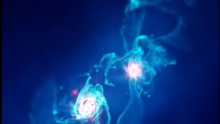
In 5 Billion Years, the Milky Way Will Be "Eaten" by the Andromeda Galaxy
| Ana Verayo | | Sep 19, 2014 11:49 PM EDT |
The universe has its own system of survivalism and in the most natural sense, the bigger ones get to "eat" the smaller, weaker ones.
Subscribe to CHINATOPIX !
Sign up for our free weekly newsletter for the latest in-depth coverage!
EDITOR'S PICKS
-

Did the Trump administration just announce plans for a trade war with ‘hostile’ China and Russia?
-

US Senate passes Taiwan travel bill slammed by China
-

As Yan Sihong’s family grieves, here are other Chinese students who went missing abroad. Some have never been found
-

Beijing blasts Western critics who ‘smear China’ with the term sharp power
-

China Envoy Seeks to Defuse Tensions With U.S. as a Trade War Brews
-

Singapore's Deputy PM Provides Bitcoin Vote of Confidence Amid China's Blanket Bans
-

China warns investors over risks in overseas virtual currency trading
-

Chinese government most trustworthy: survey
-

Kashima Antlers On Course For Back-To-Back Titles
MOST POPULAR
LATEST NEWS
Zhou Yongkang: China's Former Security Chief Sentenced to Life in Prison

China's former Chief of the Ministry of Public Security, Zhou Yongkang, has been given a life sentence after he was found guilty of abusing his office, bribery and deliberately ... Full Article
TRENDING STORY

China Pork Prices Expected to Stabilize As The Supplies Recover

Elephone P9000 Smartphone is now on Sale on Amazon India

There's a Big Chance Cliffhangers Won't Still Be Resolved When Grey's Anatomy Season 13 Returns

Supreme Court Ruled on Samsung vs Apple Dispute for Patent Infringement

Microsoft Surface Pro 5 Rumors and Release Date: What is the Latest?



